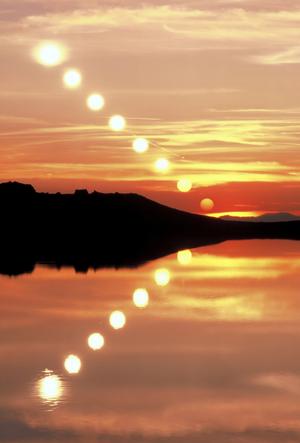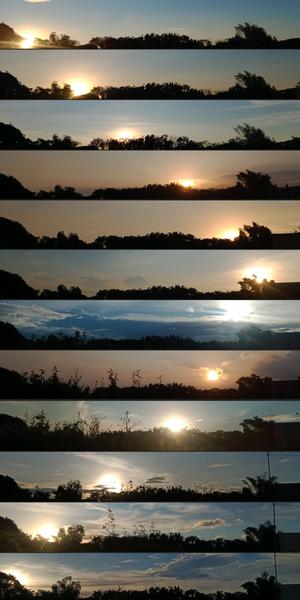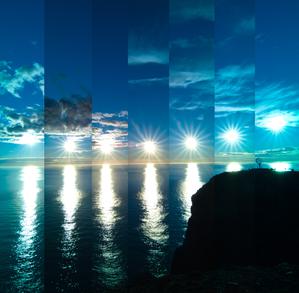Glossary term: Trajectoire du soleil (Arc diurne)
Description: La trajectoire du Soleil ou arc diurne retrace le mouvement apparent du Soleil dans le ciel, tel qu'il est perçu par un observateur situé à une position fixe sur la Terre. Chaque jour, la trajectoire trace un arc, commençant par le lever du soleil dans la partie orientale du ciel et se terminant par le coucher du soleil dans la partie occidentale. Ce n'est qu'aux équinoxes de printemps et d'automne que le soleil se lève exactement à l'est et se couche exactement à l'ouest. Au solstice d'hiver, l'arc est le plus court et le plus bas dans le ciel. À partir de ce moment, la longueur de cet arc, et avec elle la durée du jour, augmente, et chaque arc successif est plus haut dans le ciel que le jour précédent, atteignant sa hauteur maximale, et la durée maximale du jour, au solstice d'été. Ce processus se répète ensuite dans l'ordre inverse, pour atteindre à nouveau l'arc le plus court et le plus bas au solstice d'hiver.
Au nord du cercle polaire arctique et au sud du cercle polaire antarctique, le soleil ne se lève pas pendant de longues périodes en hiver et ne se couche pas pendant de longues périodes en été. Il peut donc y avoir des nuits qui durent plusieurs mois en hiver et des jours qui durent plusieurs mois en été. Au cours d'un de ces jours polaires, le soleil parcourt le ciel en cercle, passant d'un point haut à midi à un point bas à minuit sans jamais traverser l'horizon.
L'ensemble des arcs solaires peut être capturé dans une image d'exposition à long terme appelée solargraphe.
Related Terms:
See this term in other languages
Term and definition status: The original definition of this term in English have been approved by a research astronomer and a teacher The translation of this term and its definition is still awaiting approval
The OAE Multilingual Glossary is a project of the IAU Office of Astronomy for Education (OAE) in collaboration with the IAU Office of Astronomy Outreach (OAO). The terms and definitions were chosen, written and reviewed by a collective effort from the OAE, the OAE Centers and Nodes, the OAE National Astronomy Education Coordinators (NAECs) and other volunteers. You can find a full list of credits here. All glossary terms and their definitions are released under a Creative Commons CC BY-4.0 license and should be credited to "IAU OAE".
If you notice a factual or translation error in this glossary term or definition then please get in touch.
Related Media
La dernière heure de la journée
Credit: Fabrizio Melandri/UAI OAE (CC BY 4.0)
License: CC-BY-4.0 Creative Commons Attribution 4.0 International (CC BY 4.0) icons
Où le Soleil se couche chaque mois
Credit: John Paul Pile/UAI OAE (CC BY 4.0)
License: CC-BY-4.0 Creative Commons Attribution 4.0 International (CC BY 4.0) icons
The Eclipse Clock-Eclipse on a Polar Day
Credit: Stephanie Ziyi Ye/IAU OAE (CC BY 4.0)
License: CC-BY-4.0 Creative Commons Attribution 4.0 International (CC BY 4.0) icons
When the Sun Bounces
Credit: Milos Obert/IAU OAE (CC BY 4.0)
License: CC-BY-4.0 Creative Commons Attribution 4.0 International (CC BY 4.0) icons
The Path of the Sun
Credit: Frank Niessen/IAU OAE (CC BY 4.0)
License: CC-BY-4.0 Creative Commons Attribution 4.0 International (CC BY 4.0) icons













